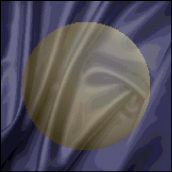The advanced material settings are those that require a shader to display results in the Viewer window. When you disable the Advanced Mode option in the Material settings, the settings that become grayed are the advanced ones that require shaders. Activate the Advanced Mode option to access these settings. To see the results of these settings in the Viewer window, you must also apply the shaders with corresponding settings.
Shaders do not necessarily let you see the result of every setting for a property. For example, the Flat shader lets you set the level of the model’s transparency but does not take the Transparency RGB settings into account. For complete results, use custom shaders.
| Shader | Advanced Material settings |
|---|---|
| Flat, Light, and Dynamic Lighting | Transparency |
| Reflection | Reflectivity |
| Bump Map or Dynamic Lighting | Bump Map and Normal Map |
| Dynamic Lighting or Custom shaders | Displacement |
| Custom shaders | Texture attached to a Material property. Only the Diffuse property does not need a shader. |
The Transparency settings lets you define the level of opacity for a material. Adjust the settings to increase or decrease the transparency of an object.
This slider can only be used with the Flat, Lighted, or Dynamic Lighting shaders. These shaders also have Transparency settings. Use the Transparency sliders in the Shader and Material settings together to achieve the result transparency on the model. The Transparency values in the Shader and Material settings work independently to give you more flexibility when, for example, a shader is attached to multiple models. See Making an object transparent.

Material proxy: Transparency settings
The Reflectivity slider lets you define the amount of light that bounces off a model to create reflection effects. This slider only has an effect in the Viewer when a shader is applied. See Reflection effects.
The Bump Map settings let you apply a bump map to a model. To see its effect in the Viewer window, apply the Bump Map shader or Dynamic Lighting shader to the model and add at least one light to the scene. When you use the Bump Map shader, you can adjust the relief effect in the Bump Map shader settings. See Creating a Bump Map and Normal Map effect.
The Normal Map settings let you apply a normal map to a model. To see its effect in the Viewer window, apply the Bump Map shader or Dynamic Lighting to the model and add at least one light to the scene. When you use the Bump Map shader, you can adjust the relief effect in the Bump Map shader settings. See Creating a Bump Map and Normal Map effect.